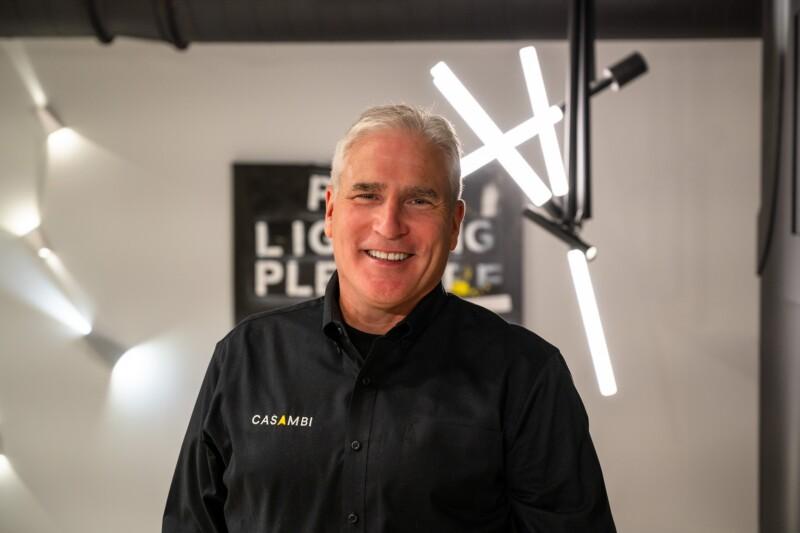Planning and installation considerations for wireless lighting solutions

Casambi wireless lighting control has been developed with absolute ease of installation and use as a top priority. However, there are still a few considerations to keep in mind when designing wireless-enabled products or specifying, planning, or commissioning a new project.
Any radio signal can be affected to some degree by the environment in which it’s used and the nearby materials, so to maximize communication reliability, three things should be taken into account when planning where to physically install wireless-enabled products.
- The material and construction of the final product itself.
- The installation location and distances between devices.
- Materials used in nearby structures, like walls or panels dividing rooms
Device placement and the kind of material play a huge role
Placing a wireless module inside any kind of enclosure may influence its performance. For example, a wireless device installed in a metal luminaire will be likely to have a shorter communication distance than a seemingly identical-looking luminaire made from plastic. A steel enclosure will almost certainly restrict the radio signal more than if the enclosure were made of aluminum. Even if choosing to use metal in the product designs there are simple methods that can be used to ensure wireless signals can still be distributed in the best possible way. Careful consideration and testing during the design process mean that potential pitfalls can easily be avoided.
On an installation, it’s not only necessary to be aware of the typical communication range of the products in free air but also to consider possible signal restrictions caused by physical obstructions that may be present. A thick concrete or stone wall may block or distort a radio signal in much the same way as a sea wall will block waves or reduce their intensity.
As an example, many people will be familiar with similar wireless issues from normal daily life. Who can say they haven’t experienced the occasional loss of wireless headphone audio when moving around your home, or experienced issues with WiFi connection from a certain room?
With a bit of testing, there’s never an issue that can’t actually be resolved
The best wireless performance will be achieved between products placed in the line of sight of each other wherever possible. Should an obstruction prove to be an issue, it’s usually simple to resolve by a slight adjustment to the product location, or through the easy addition of an extra wireless module to act as a bridge between the restricted areas.
Communication distances will naturally vary for different product designs, and this is only to be expected. Some designs simply aren’t required to be capable of communicating over large distances. For example, an office luminaire only needs to be able to communicate over a few meters since office illumination requirements, and therefore suitable luminaire designs, mean that they are not intended to be installed far apart.
On the other hand, street lighting luminaires will be designed and tested to ensure that their communication range meets the requirements for the distances involved in normal road lighting applications.
Wireless lighting device manufacturing goes above and beyond performance needs, and will continue to do so
Manufacturers of wireless products, regardless of the material from which they are constructed, will choose to design and test their solutions to meet or exceed the performance requirements of the typical applications for which they have been designed.
In practice, it’s advisable to just take a little time to consider and evaluate these aspects to ensure that the wireless solutions you implement will continue to provide the optimum lighting experience for the users for years to come.
When all is said and done, the Casambi team is continually innovating and enhancing performance and capabilities to ensure our ever-expanding ecosystem provides the perfect user experience and wireless mesh lighting solutions.


